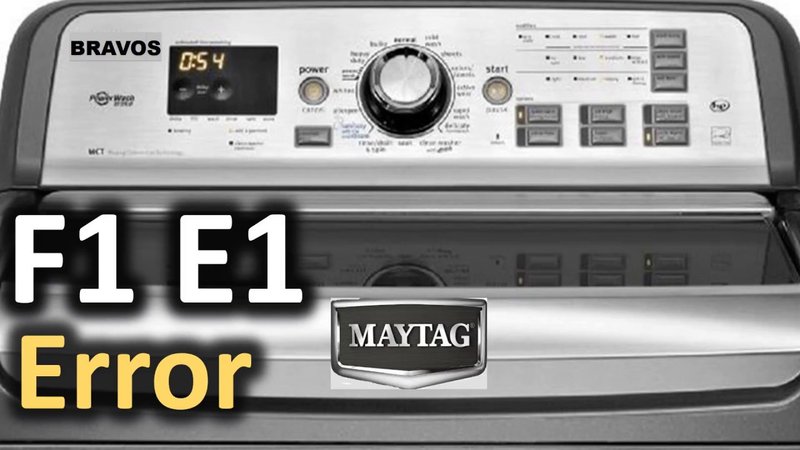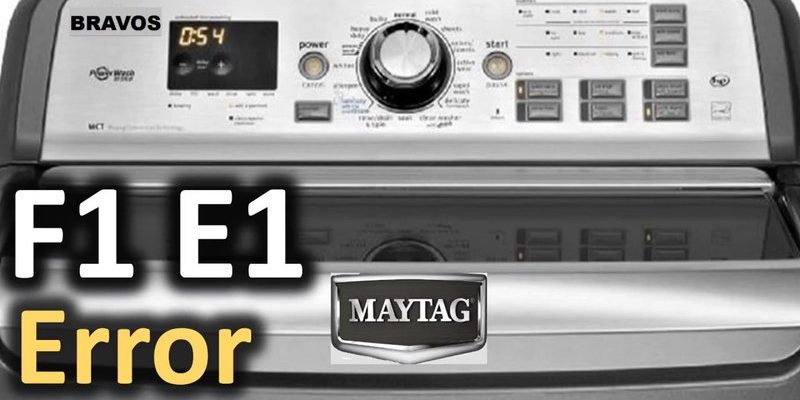
When it comes to household chores, we all crave simplicity and predictability. Just imagine you’re ready to tackle that pile of laundry, and suddenly your trustworthy Maytag decides to throw a fit with an F1 error. Not ideal, right? Like an unexpected rain on a sunny day picnic, it can dampen your spirits. But don’t worry! By understanding the causes of the F1 error and learning how to prevent it, you can ensure that your washing machine stays in good working order, allowing you to enjoy seamless laundry sessions without any unexpected glitches.
Understanding the F1 Error Code
Let’s dive a little deeper: what exactly is the F1 error? In layman’s terms, the F1 error code signals a problem with the water level pressure switch. Imagine it as a person who struggles to gauge when a glass of water is full—it constantly fills or refuses to fill, unsure when to stop or start. This confusion can lead to overfilling or, conversely, not filling at all, disrupting your washer’s cycle.
The first step in addressing this issue is identifying why it occurs in the first place. Often, it can be caused by blockages in the pressure hose or even a malfunctioning pressure switch. Sometimes, the machine’s control board, which acts like the brain, misreads the signals due to electrical interference or short circuits. By pinpointing these root causes, you’ll be in a better position to prevent them from happening again. Just like habitual maintenance of your car prevents engine troubles, regular checks on your washer can avoid such disruptive errors.
Here’s the deal: when you understand what triggers the F1 error, you’re already halfway to preventing it. Consistent pressure switch checks and ensuring the connection lines are clear from debris can save you from future mishaps. Being proactive is your best bet, almost like laying down an insurance policy for your appliance. Okay, so how exactly do you prevent these issues? Let’s explore some practical steps you can take.
Regular Maintenance and Preventive Measures
Regular maintenance sounds a bit daunting at first, but it’s really just like giving your washing machine a routine check-up to keep it healthy. Imagine if you never took your car for a service—it’d probably start making strange noises or even break down. Your washing machine’s no different. Start by checking the water inlet valve regularly. It’s like the gatekeeper of your washer, ensuring the right amount of water flows in. A clogged or faulty inlet is like a clogged faucet, potentially leading to the F1 code.
Additionally, the pressure hose, which connects the drum to the water level sensor, should be inspected for blockages. Think of this hose as a stethoscope; if it’s pinched or blocked, it can’t relay the correct information about water levels. This might sound a bit technical, but a simple visual inspection and a gentle cleaning can go a long way in keeping it clear. Regularly cleaning this hose ensures it remains free of lint and other debris, preventing any erroneous signals.
Then there’s the control board, the brain of your machine. If you were to equate it to a computer, sometimes it just needs a restart or a minor tweak to function correctly. Ensure that the wiring is secure and there’s no evidence of electrical shorting. Just like checking your home’s circuit breaker for any tripped switches, a periodic check here can prevent significant issues down the road. If you’re ever in doubt, consulting a professional can save you both time and potential headaches.
Expert Checks and Professional Assistance
Sometimes, despite all our preventive measures, things might still go awry—much like a well-cared-for car stalling unexpectedly. In such cases, calling in the experts is a wise decision. Professional technicians have the training and tools to diagnose and rectify issues that might be out of a typical homeowner’s realm. They can perform advanced diagnostics on your pressure switch or control board, ensuring everything functions optimally.
It’s also worth noting that technicians can often spot issues before they become significant problems. Think of them as preventive detectives, spotting those subtle warning signs that could indicate future errors. Their experience allows them to provide valuable advice on the care and maintenance of your washer, offering tips that can extend its lifespan and reduce the likelihood of encountering the F1 error.
While DIY maintenance is possible, there’s no shame in seeking help when you need it. Much like calling a mechanic for car troubles, a professional can ensure that your washing machine gets the care it needs. And who knows—by observing them, you might pick up a few tricks yourself for future maintenance!
Keeping Your Maytag Washer in Tip-Top Shape
In conclusion, while the F1 error may initially seem like a daunting hurdle, it’s one that can be managed and even prevented with the right approach. With regular maintenance checks, an understanding of the underlying causes, and a willingness to seek professional help when necessary, you can ensure your Maytag washing machine remains a reliable workhorse in your home.
Remember, just like any other appliance or machine, your washing machine benefits from a little TLC. By investing a bit of time in understanding its workings and maintaining its components, you’re safeguarding against future disruptions and extending its service life. In the grand scheme of home management, these small efforts can lead to significant peace of mind and a smoother, error-free laundry experience. Happy washing!
